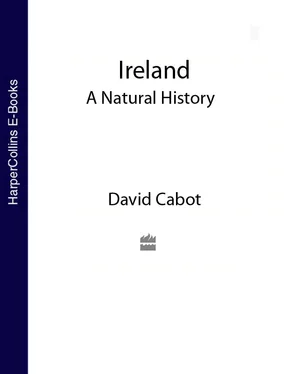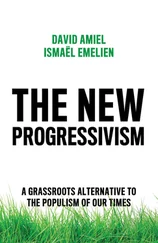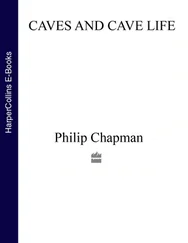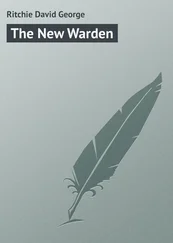Ballydavid Head, Co. Kerry, with Smerwick Harbour in the distance. One of the wildest stretches of coastline where the Atlantic waves have eaten back the rocks to create dramatic cliff scenery. A favoured habitat of the chough
Plate 7
Inner Galway Bay where long sea inlets penetrate the land providing excellent conditions for the cultivation of oysters
Cliffs of Moher, Co. Clare, where the horizontally bedded sandstone cliffs provide breeding sites for an abundance of seabirds
Banna Strand, Co. Kerry, with the Dingle peninsula in the distance. One of the many fine beaches and associated sand dune systems found along the Irish coastline
Great Blasket island, Co. Kerry. Occupied until 1952, the island is now an important haul-out area for Atlantic grey seals
Plate 8
Increasing numbers of barnacle geese are wintering in northwestern and western coastal areas
Tory Island, Co. Donegal, one of the remotest and bleakest of inhabited islands of Ireland. It is an important observation point for migratory seabirds
The gannet is the largest seabird in Ireland, and numbered some 24,700 breeding pairs in five colonies during 1984–8
The power of the Atlantic is slowly sculpting and forming new coastal landscapes along the western seaboard
Editors’ Preface
Ireland has a long and proud tradition of natural history, and some of its leading figures have made outstanding contributions to the knowledge and understanding of its important segment of the European flora and fauna. Some of its most distinctive features have achieved fame as gems of the international scene of natural wonders: the fantastic limestone pavements of the Burren with their unique plant assemblage; the desolate blanket bogs and rocky heaths of Mayo and Connemara; the magnificent mossy oak woods of Kerry and Cork; the spectacular seabird islands and headlands; and the greatly varied series of lakes and fens among both lowlands and mountains.
There is a large literature on all this, yet few Irish natural historians have tackled the subject as a whole. Geraldus Cambrensis ambitiously had a shot within his all-embracing work on Ireland Topographia Hiberniae around 1188, but it was not until 1944 that the doyen of Irish naturalists, Robert Lloyd Praeger, tried again with his Natural History of Ireland. This is, as its sub-title said, ‘a sketch of its flora and fauna’, and though valuable as a summary, it still left a need for something much more comprehensive. The New Naturalist Editors were mindful of the scope for a modern treatment of the subject within the series, but it seemed to require such a breadth and depth of knowledge and insight that a suitable author was not easily to be found.
Happily, David Cabot proved to be just the person for the task. He has applied his unrivalled all-round personal experience of Ireland, its wildlife and physical features, and his assiduous literature research, to the compilation of this volume. Since plants and animals know no political frontiers, it has the particular merit of dealing with Ireland as a geographical and ecological whole. Little escapes the author’s breadth of grasp, and enthusiasts for all the main groups of plants and animals will find much to excite and inform their interest. The main habitats are all comprehensively explored, and the mysterires of the special Irish features – such as turloughs, slobs and callows – revealed. For those craving further knowledge, a very full list of references is given. David Cabot’s book does justice to the rich variety of Irish wildlife, and its illustrations convey the similarly diverse beauty of the country it inhabits.
As well as providing an in-depth treatment of the fascinating Irish flora and fauna, their habitats and their history, Ireland examines the topical concerns of nature conservation and human impact. We are delighted to present it as a much-needed and worthy addition to the other regional works in the series, and as a tribute to the many generations of Irish naturalists whose labours have helped the author to paint this portrait.
Author’s Foreword
My endeavours for this book began in 1959 when I ‘fell out of the sky’ into County Wexford, in a sort of horizontal manner from the Fishguard-Rosslare Ferry, one warm, sunny August afternoon. Making my way northwards, the first arresting ornithological surprise was a hooded crow frisking some rubbish on a heap of refuse outside New Ross. They were a rarity where I had just come from.
That innocent encounter set me thinking. Why were these crows so numerous and living so far south in Ireland, while Britain was bereft of them at the same latitudes? Their only claw-hold was in Scotland, a more northerly territory than the most northern extremity of Ireland. What extra inducements were on offer in this low green island, some 80 kilometres west of Wales? Not only did these grey crows buck the code of ‘conventional’ distribution behaviour, but other birds and some mammals were at it too, and so were plants. Straight away I was intrigued by the natural history questions posed by islands.
Islands, because of their remoteness, beg scores of difficult questions from biologists. How and when did they acquire their flora and fauna? How many times did the ice wipe out the incipient growth in Ireland and northwestern Europe to produce a clean slate? Was the slate entirely clean or were there species lurking in a concealed spot, dormant, quiescent, and waiting for conditions to be right again? Or did they all travel from the Continent at various stages in time, attempting a new onslaught every time the climate allowed a move? What delayed the absentees – nowhere to be seen in Ireland today, but present on the larger, nearby land mass? Have any of the island dwellers turned into new species or varieties in their cloistered gene pool? Do island plants and animals practice a different ecology from that of their brothers and sisters elsewhere? And if so, why?
While continuing to tread the hot road I pondered these questions. Eventually a bruised Renault 4, answering my thumb, stopped. The owner, profusely apologetic for the agglomeration of dirty nappies adrift on the back seat, displayed such a virtuoso performance of wild words and images that I was seduced into the domain of supreme significance in Ireland: the world of imagination. The crows flapped out of my head. Eventually, after an unexpected three week digression – I was only to have stayed for two nights as a guest with a farming family deep in the lush Carlow countryside – I arrived at Trinity College, Dublin, to pursue my studies in Natural Sciences. The crow came back to nag me. It was the beginning of an enduring fascination for the country I went on to adopt as my home. In other words, I fell in love with Ireland under the unlikely sign of the crow, stayed on, married her, and never ceased to be enraptured.
The intention of this book is to provide a descriptive overview of the natural history of Ireland. Such a book involves choices and judgement concerning what to include and what to leave out. My aim throughout has been to present a balanced view.
First came the question of the structure of the book. Perhaps it would be helpful to explain my philosophy of approach on this point. The first chapter is about earlier naturalists, and sets in place the basic natural history rubrics of Ireland. Some knowledge of these naturalists and their works provides a background to what follows in the subsequent chapters. The second chapter gives an explanation of Ireland’s biological history.
The narrative strategy adopted in the rest of the book is simple. It is based on the configuration of the Irish landscape. We start high up with mountains and uplands, then come down to lower levels in subsequent chapters before moving out towards the sea. The journey across the lower altitudes takes us in and out of the vast expanses of peatlands and the great lakes and rivers that play such a dominant role in the landscape. The Burren and turloughs, internationally famous treasures of Ireland and Europe, deserve a special chapter to themselves. The small remnants of ancient broadleaved woodlands make up the following chapter. Farmland, replacing ancient woodlands, commands most of the land area of the country and is discussed next. As a modified ecosystem it provides many opportunities for wildlife. Then we move on to the coastline, the islands and finally the sea.
Читать дальше












